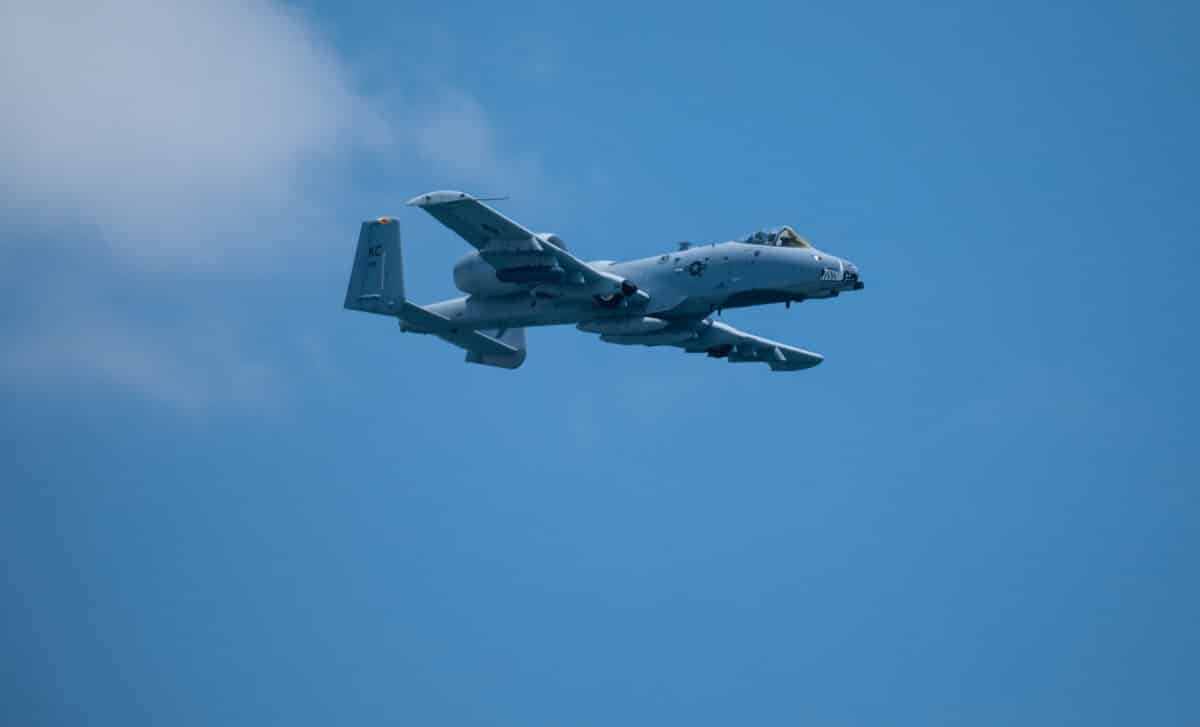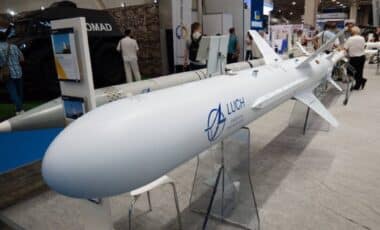The A-10 Thunderbolt II, long known for its ground attack dominance, has been quietly armed with a surprising new capability: using APKWS II laser-guided rockets to intercept drones. Yet this air-to-air role arrives at the end of the aircraft’s operational life, with retirement set for 2026.
According to The War Zone, the U.S. Air Force has confirmed that the A-10 is now cleared to carry these precision weapons in an anti-drone role, alongside the F-15E Strike Eagle and F-16 Fighting Falcon. This capability allows the aircraft to engage slow-moving aerial targets with significantly lower-cost munitions—just as it faces final withdrawal from service.
Originally designed for close air support, the A-10 has remained a frontline aircraft for decades, valued for its loitering ability, durability, and firepower. Its newfound drone-hunting role adds a dimension that could have extended its relevance in modern air combat. Despite this, the Air Force’s current budget request seals its fate within the next 15 months, concluding a service career that might have included a valuable role in counter-unmanned aerial operations.
China Steps In Where Russia Failed: Iran Eyes J-10C Fighters to Counter Israeli Air Power
Laser-Guided Rockets Adapted for Air-To-Air Missions
The Advanced Precision Kill Weapon System II (APKWS II), originally built to convert 70mm Hydra rockets into laser-guided air-to-ground munitions, has evolved to take on airborne threats. This transformation includes the integration of FALCO software, tailored for fixed-wing aircraft to engage slow and low-maneuverability aerial targets such as drones and cruise missiles.
This technology has already been deployed successfully. The F-16 first received the air-to-air APKWS capability, later joined by the F-15E Strike Eagle, which recently intercepted Houthi drones at significantly lower cost than traditional missiles. Now, the A-10 joins this list, with the Air Force confirming its compatibility in the 2026 budget documentation. These APKWS rockets feature a laser seeker and proximity fuse, making them suitable for intercepting aerial threats without needing direct impact.
Notably, the rockets expand the aircraft’s engagement capacity. A single fighter like the F-15E can carry a much larger number of APKWS rounds than conventional air-to-air missiles, increasing operational flexibility during saturation attacks. The same benefit applies to the A-10, which can carry a substantial rocket load for prolonged missions.
A-10’s Unique Attributes Suit Drone Interception
The A-10’s slow speed, maneuverability at low altitudes, and extended loiter time make it a practical platform for counter-drone patrols. As reported by The War Zone, its agility and load-carrying ability position it in an effective niche between high-speed jets and helicopters like the AH-64 Apache, which has been used in similar roles in Israel and Ukraine.
While the A-10 lacks an onboard radar—limiting autonomous targeting capability—it can compensate by using external datalinked tracks or potentially with podded radar systems. Once targets are identified, the A-10‘s precision pods can guide the APKWS rockets using laser designation.
Its large payload capacity also supports deeper magazine options, allowing it to sustain engagements over a longer period. This would make the aircraft especially useful in protecting fixed installations or remote outposts where long-range one-way attack drones pose a persistent threat.
New Seeker Tech Arrives Too Late for the Warthog
Despite this development, the A-10 will not benefit from the next generation of APKWS upgrades. BAE Systems is working on a seeker kit that introduces a limited “fire-and-forget” capability, freeing aircraft from continuous laser targeting during engagement. The feature is designed to reduce crew workload and allow for quicker engagement of multiple threats.
At the Sea Air Space 2025 conference, a mock-up of this dual-mode seeker—combining laser and infrared sensors—was presented, indicating ongoing efforts to broaden APKWS utility. However, these enhancements are unlikely to reach operational use on the A-10, given the Air Force’s retirement timeline for the aircraft by end of fiscal year 2026.
Some have suggested alternative futures for the Warthog. The article mentions that Ukraine or Jordan could be potential recipients of retired aircraft, especially for counter-drone defense. Ukraine, currently using various aircraft including Yak-52 trainers for drone interception, might benefit from such a transfer. But these scenarios remain uncertain and are constrained by both time and policy decisions.








